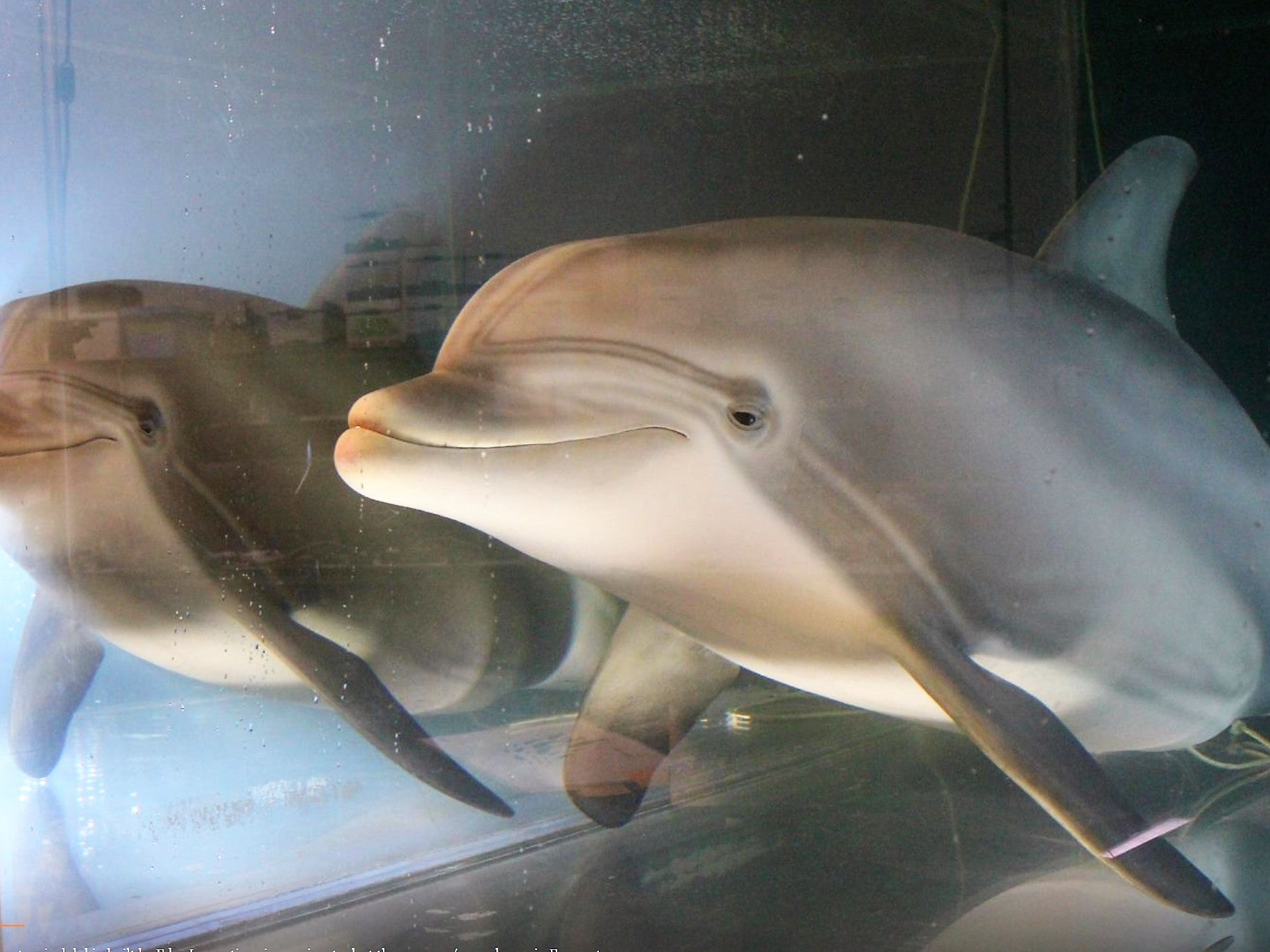Robot dolphin could replace captive animals in aquariums and theme parks
Animatronic creature was built with the support of animal rights group PETA

A life-sized robot dolphin could help end animal captivity by replacing living creatures in aquariums and theme parks, according to a US-based animatronics firm.
Edge Innovations designed and built the ultra-realistic dolphin, which costs between $3 million (£2.3m) to $5m, and hopes it will be used in Hollywood movies and aquatic theme parks in place of living animals.
It says that swimmers could dive with life-like animatronics like robotic great white sharks or even reptiles that filled Jurassic-era seas millions of years ago.
"There are like 3,000 dolphins currently in captivity being used to generate several billions of dollars just for dolphin experiences. And so there's obviously an appetite to love and learn about dolphins," said Edge Innovations founder and CEO Walt Conti.
"And so we want to use that appetite and offer kind of different ways to fall in love with the dolphin."
Animatronics may bring back audiences turned off by parks using live animals, said Mr Conti.
Some 20 European countries have already banned or limited the presence of wild animals in circuses.
At Edge's Hayward, California headquarters, its 250kg (550 pound), 2.5m (8-and-a-half-foot) animatronic dolphin with skin made from medical-grade silicone headlined a program for schools in partnership with TeachKind, part of People for the Ethical Treatment of Animals (PETA).
Edge also made the aquatic creatures used in Hollywood blockbusters "Free Willy," "Deep Blue Sea" and "Anaconda."
"The idea of this pilot is really to create a kind of "Sesame Street" under water," said Roger Holzberg, creative director for Edge's animatronic program.
"Those characters taught a generation how to feel about different kinds of aspects of humankind in ways that had never been imagined before. And that's what we dream of with this project."
PETA activist Katherine Sullivan said: “There is an end in sight to cruel ‘swim with dolphins’ programs, for which young dolphins are traumatically abducted from their ocean homes and frantic mothers, sometimes illegally.”
Additional reporting from agencies

Join our commenting forum
Join thought-provoking conversations, follow other Independent readers and see their replies
0Comments